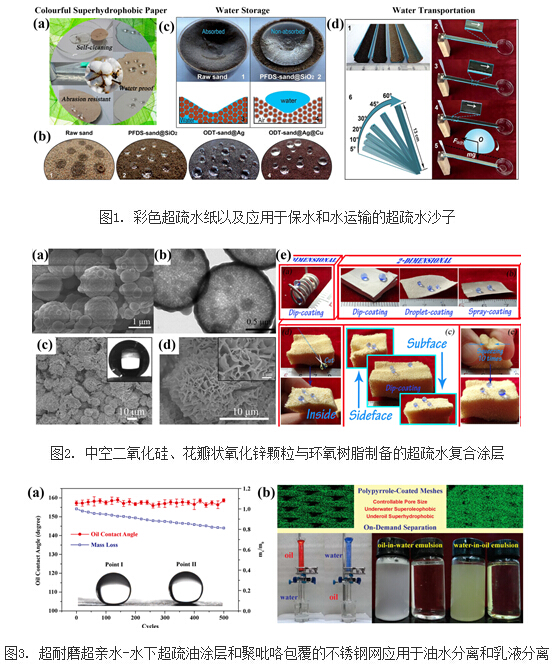Infiltration is one of the important properties of materials. According to the difference of the extreme wettability of water on the surface of materials, it can be roughly divided into super-hydrophilic and super-hydrophobic materials. Many organisms in the natural world have extreme wettability of the epidermis. For example, the "sludge and muddy" surface of the lotus leaf has excellent hydrophobic properties, so that self-cleaning can be achieved; the skin of the fish is extremely hydrophilic, so that it can have a strong repellent effect on oil under water. This can ensure that fish are not contaminated by marine crude oil and die. Materials with extreme wettability have a wide range of applications in fields such as self-cleaning, anti-corrosion, marine anti-fouling and drag reduction, sewage purification, and organic solvent purification. The Bionic Tribology Task Force of the State Key Laboratory of Solid Lubrication, Lanzhou Institute of Chemical Physics, Chinese Academy of Sciences has established a variety of micro-nano composite structural interface materials with special wettability in recent years. Recently, the researchers disperse cotton swelling in zinc chloride solution, and then doped a variety of stearates on the fibers, and obtained a variety of colored super-hydrophobic papers by simple suction filtration and tablet drying. In addition, sand sand@silica, sand@Ag, sand @Ag@Cu particles are obtained on the surface of common sand by hydrolyzing tetraethylorthosilicate, silver mirror reaction, and the like, using silane hydrolysis or thiol thiolation. Different super-hydrophobic sands were obtained and successfully applied to the fields of water retention, water collection and water transportation. The general super-hydrophobic material has a fatal defect that the surface structure is easily damaged and has poor durability. In order to increase the service life of the super-hydrophobic material and simplify its preparation process, the research group uses an organic binder (epoxy resin, phenolic resin) as a bonding agent. In the layer, the perfluorosilane-modified hollow silica microspheres and the stearic acid-modified magnesium oxide particles and the petal-like zinc oxide particles are modified to different substrate surfaces by means of simple scraping, dripping, and spraying. A variety of ultra-abrasive super-hydrophobic coating, the coating has potential application value in the field of anti-pollution, anti-corrosion and anti-icing. At the same time, the research group simulated fish skin structure performance, and combined a traditional hydrophilic inorganic binder with a variety of nanoparticles to build an ultra-abrasive ultra-hydrophilic-underwater superoleophobic coating and Used for purification treatment of oily sewage. In addition, the research group coated polyaniline and polypyrrole on the surface of a stainless steel mesh by a simple electrochemical oxidation polymerization method to obtain underwater super-oleophobic and oil-based super-hydrophobic interface materials, and applied them to on-demand oil and water. Separated. Related research results are published in Chem. Eng. J. 313 (2017) 1152–1159, J. Colloid Interface Sci. 494 (2017) 54–63, J. Colloid Interface Sci. 498 (2017) 182–193, RSC Adv. 7 (2017) 9169-9175, ACS Nano 11 (2017) 1113−1119, J. Mater. Chem. A 5 (2017) 6416–6423, Langmuir 33 (2017) 3702−3710, Chem. Eng. J. 304 ( 2016) 115–120. The above work received long-term support from the National Natural Science Foundation of China (51522510 and 51675513), the "100-person Plan" of the Chinese Academy of Sciences and the State Key Laboratory of Solid Lubrication. Corner Shower Drain,Corner Floor Drain,Corner Balcony Floor Drain,Corner Shower Floor Drain Kaiping City Jinqiang Hardware Products Co.,Ltd , https://www.kimpowerdrain.com
Lanzhou Chemicals made a series of progress in interface material research
